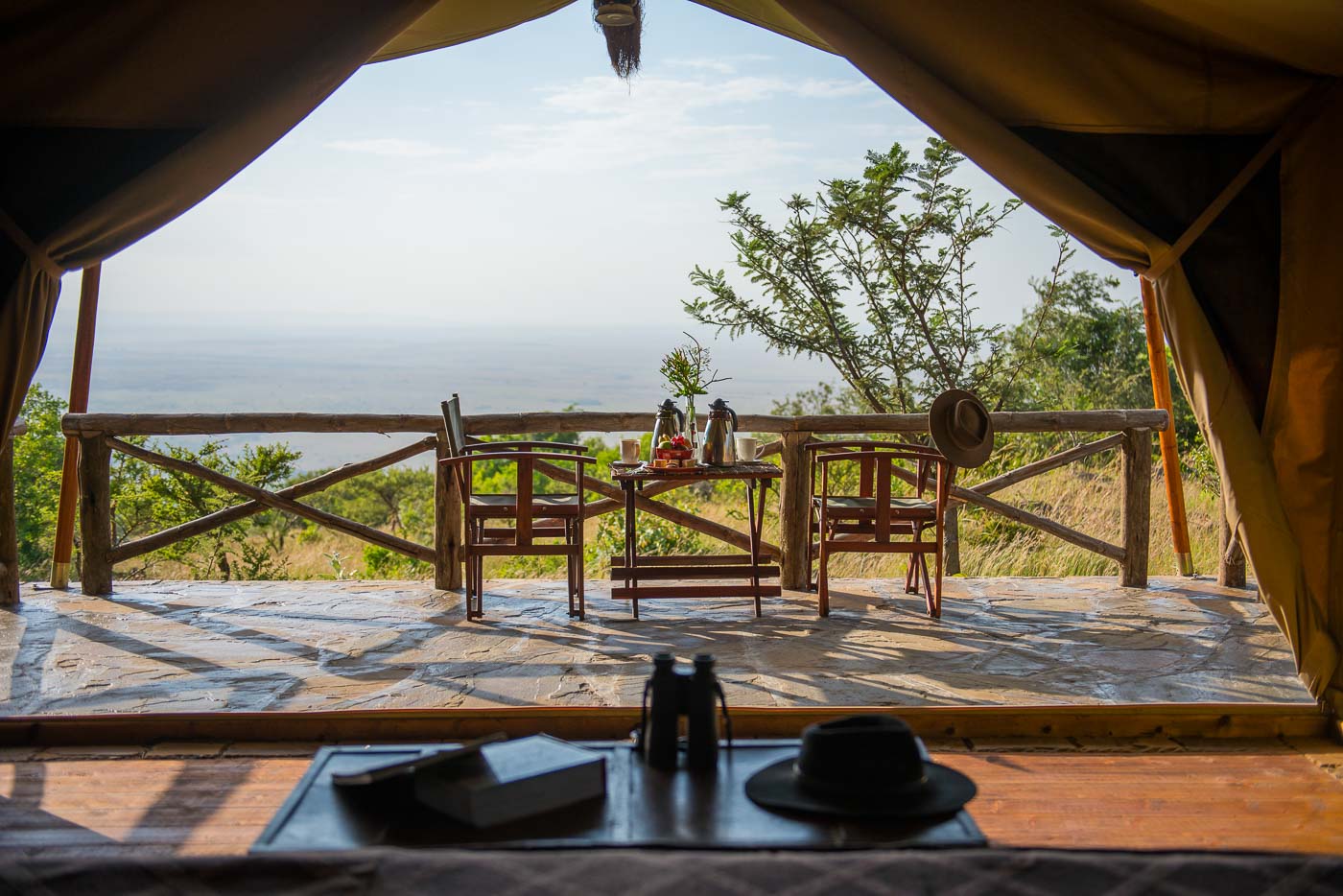Since the very early stages of our courting, my wife and I have talked openly about a shared dream to take an African safari. Elephants! Rhinoceros! Giraffes! All of these animals are critters we have hoped to see in the wild. With two children, however, we likely can’t afford to schlep the kids. And we wouldn’t want to leave them home for such a fantastic adventure.
Naturally, then, we’ve looked far and wide for similar wildlife-oriented experiences here at home. It turns out one of them is around the proverbial corner from our house in Sonoma County, California: Safari West. The 400-acre preserve is home to nearly 700 species of animals, including Grant’s zebras, ring-tailed lemurs, and southern white rhinoceros, to name a few. The place also has 30 canvas-walled tent cabins—imported from Africa, of course—in which visitors can spend the night.
One night this spring, my wife and I did just that. Our cabin—Cabin 19—overlooked the giraffe enclosure; from our deck, where we drank a bottle of local Zinfandel after check-in, we watched the animals cavort with wildebeests and frolic with each other, just few neck-lengths away. Inside the tent’s pale green canvas walls, décor was rustic but elegant, a motif I like to consider bush chic. Two of the tables were hand-hewn from pieces of a felled tree trunk. Overhead lights were made from tree branches. The lampshade had metal silhouettes of animals from the Serengeti. The cabin had two double beds (with electric blankets), a space heater, and an armoire with umbrellas and flashlights. There also was a small-but-spotless private bathroom, which had a copper basin and hot water.
On the night we stayed, we could have taken the car into Santa Rosa for an upscale meal. Instead, we opted to stay on-property and eat at the Savannah Café, a low-lying building that doubles as the mess hall for resort guests. Chefs cooked up a buffet-style ranch barbecue, complete with chicken, corn, beans and more. After an hour, we were so stuffed that we grabbed our flashlights and headed back to the cabin, where we snuggled down on a comfy bed beneath an electric blanket, and dozed off to the cacophonous cackles of flamingoes—nature’s white noise.
The following morning, we awoke to the same flamingoes bright and early, and wandered down the hill to the Café for a continental breakfast that comprised bagels, fresh fruit and coffee. Fueled for the day, walked around a back portion of the park in which monkeys and cheetahs and other animals (including a porcupine) are sequestered in separate habitats. My wife, an anthropologist, spent much of the time regaling me with details about the monkeys. Her tutorial made the experience significantly more interesting.
Around 10 a.m., we returned to the area in front of the Café and boarded double-decker, open-air Jeep-like vehicles for a “safari” around the property. Over the next 2.5 hours, our vehicle sputtered up and over the back hills of Sonoma County, inching past gazelles, oryx, antelopes, cape buffalo and other critters. A Safari West naturalist guided our trip, pointing out distinguishing characteristics on each of the animals as we drove by. I found the naturalist helpful—just not as helpful as my own wife.
The tour ended just before lunchtime, and we had enough time to hike back to the cabin and retrieve our belongings before check-out. That evening, on the drive home, my wife and I struggled to summarize our experience overnight at Safari West. No, we agreed, it wasn’t luxury living on the Serengeti. But it sure came close.

















